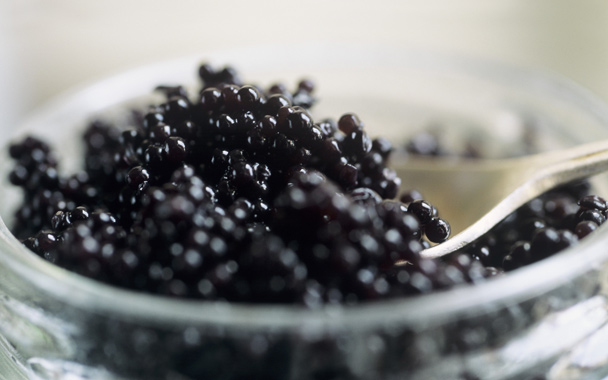My Valentine’s Day shopping has become a lot more complicated in recent years. Once, it was a straightforward matter of securing a dozen long-stemmed red roses, a well-chilled bottle of Champagne, and a one-ounce jar of ossetra caviar—and then popping Cleo Laine on the stereo. But sturgeon are killed to harvest their roe, and with wild sturgeon from the Caspian Sea in danger of extinction, savoring those briny, buttery, black eggs has lost its romantic allure.
At the risk of sounding like a snob, farmed American caviar, while perfectly sustainable, doesn’t measure up to the wild imported stuff (nothing but the best for my Valentine). And an ounce can still set you back $80.
So I was heartened to read a report from Britain’s Telegraph this week about a Latvian company that has developed a method of extracting caviar from ossetra sturgeons without killing the fish themselves, allowing them to spawn again and again. It’s aquaculture’s answer to having your cake and eating it too.
According to Telegraph reporter Rose Prince, who witnessed the process firsthand, workers at Mottra Caviar use ultrasound to determine when captive females are ready to spawn and then manually massage their eggs into collection containers. A small, quick-to-heal incision in the muscle of the urinogenital opening makes the process more comfortable for the fish, which is only out of the water for two or three minutes. It’s much less stressful than removing the roe by cesarean section, as some farms do, and it’s way better than extinction.
Unfortunately, I can’t find a source in the United States for Mottra caviar. Do you think I could get away with candy conversation hearts?




 Pinterest
Pinterest


